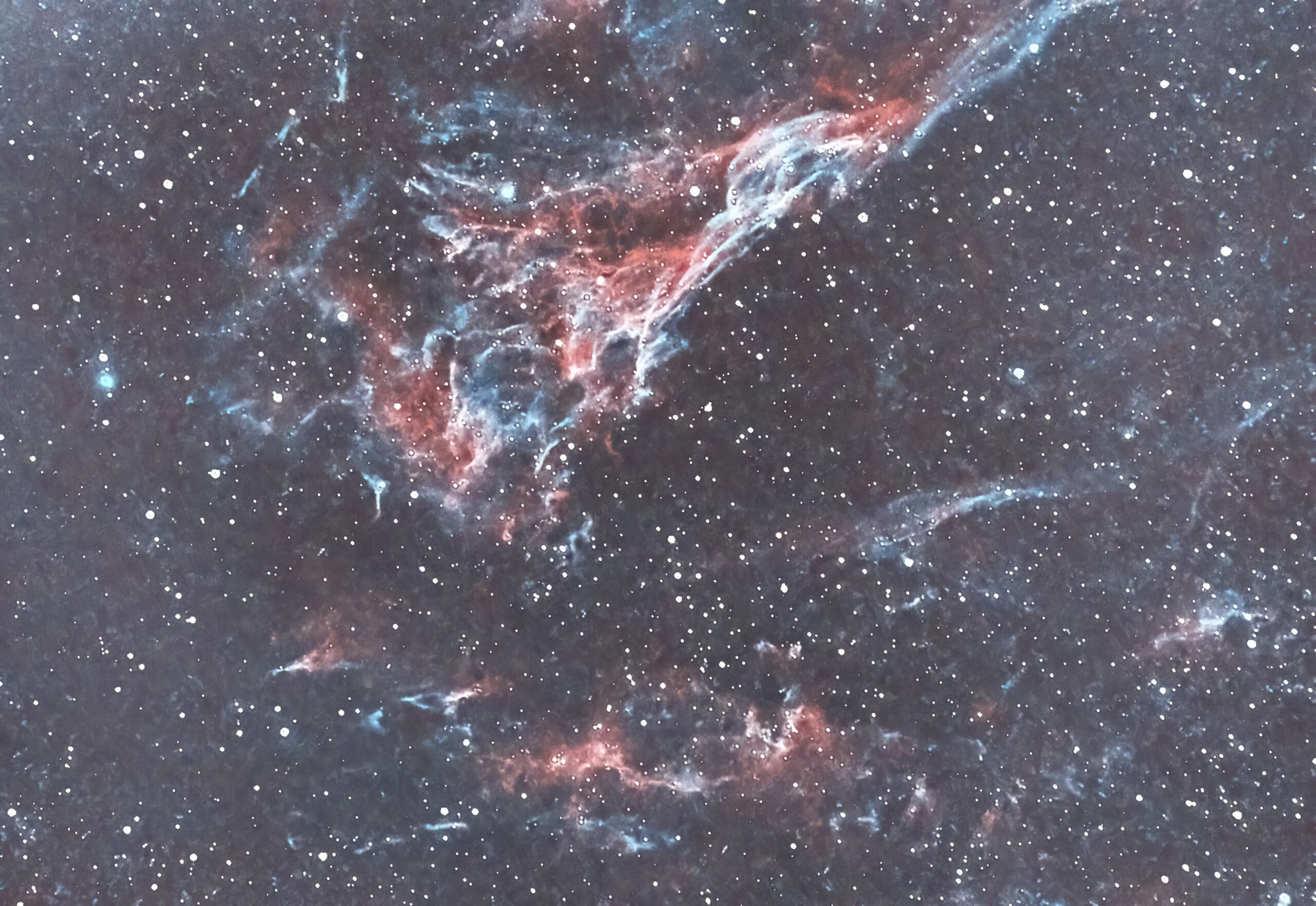NGC 6979 & NGC 6974- Pickering’s Triangle and Flemings’ Triangle Wisp

NGC 6979 & NGC 6974, also known as Pickering’s Triangle and Flemings’ Triangle Wisp
The above image was taken on a very windy night here in the south of the UK, so the stars are not round, but the image is not so bad that I wanted to ditch the data.
The image comprises 66 180 seconds subs in winds of 24 mph and higher gusts. This was processed differently from some of my other posts, but I think I will make another post with the same image processed differently.
Information about NGC 6979 & NGC 6974
NGC 6979 and NGC 6974 are two fascinating objects in the night sky that have long captured the attention of astronomers and stargazers alike. These two nebulae are located in the constellation of Aquila, about 5,000 light-years away from Earth. They are part of a larger complex of nebulae known as the Pelican Nebula and some of the most striking and beautiful sights in the night sky.
NGC 6979 is a bright emission nebula that glows with a distinctive red hue. It is located at the eastern edge of the Pelican Nebula and is often referred to as the “Elephant’s Trunk Nebula” due to its shape. The nebula is formed from ionized gas that the intense radiation of nearby stars has heated. This radiation causes the gas to glow and emit light, creating the distinctive red colour seen in nebula photographs.
NGC 6974, on the other hand, is a reflection nebula that is located just to the north of NGC 6979. It is formed from dust particles that scatter the light of nearby stars, creating a blue glow that is distinctly different from the red hue of NGC 6979. The nebula is also home to several young stars that are in the process of forming, making it a site of ongoing research into the process of star formation.
NGC 6979 and NGC 6974 make up a stunning visual display in the night sky. Their contrasting colours and unique shapes make them a popular target for astrophotographers and amateur astronomers alike. But these nebulae are more than just pretty sights; they are also important objects for scientific study.
One of the key areas of research into NGC 6979 and NGC 6974 is the process of star formation. These nebulae are sites of ongoing star formation, with new stars born within their dense clouds of gas and dust. By studying these young stars and the processes that lead to their formation, astronomers can better understand how stars are born and how they evolve over time.
In addition to their scientific importance, NGC 6979 and NGC 6974 are also important objects for understanding the structure and evolution of the Milky Way galaxy. These two nebulae are located in the galactic plane, the flat disk of stars and gas that makes up most of the Milky Way. By studying their properties and the properties of other objects in the galactic plane, astronomers can better understand the structure and dynamics of the Milky Way.
Despite their scientific importance, NGC 6979 and NGC 6974 are also objects of great beauty and wonder. These nebulae’s unique colours and shapes make them a popular target for stargazers and astrophotographers alike. Their location in the constellation of Aquila also makes them a popular target for those who are interested in exploring the wonders of the night sky.
In conclusion, NGC 6979 and NGC 6974 are two fascinating objects in the night sky that have captured the attention of astronomers and stargazers alike. These nebulae are not only beautiful sights to behold, but they are also important objects for scientific research into the process of star formation and the structure of the Milky Way galaxy. So next time you are gazing up at the stars, take a moment to appreciate the wonder and beauty of NGC 6979 and NGC 6974 and all that they represent.
